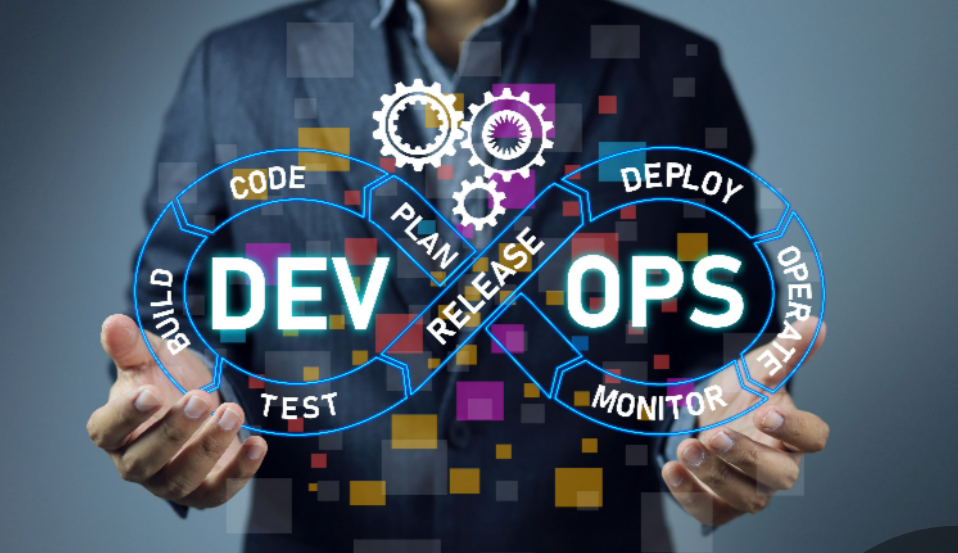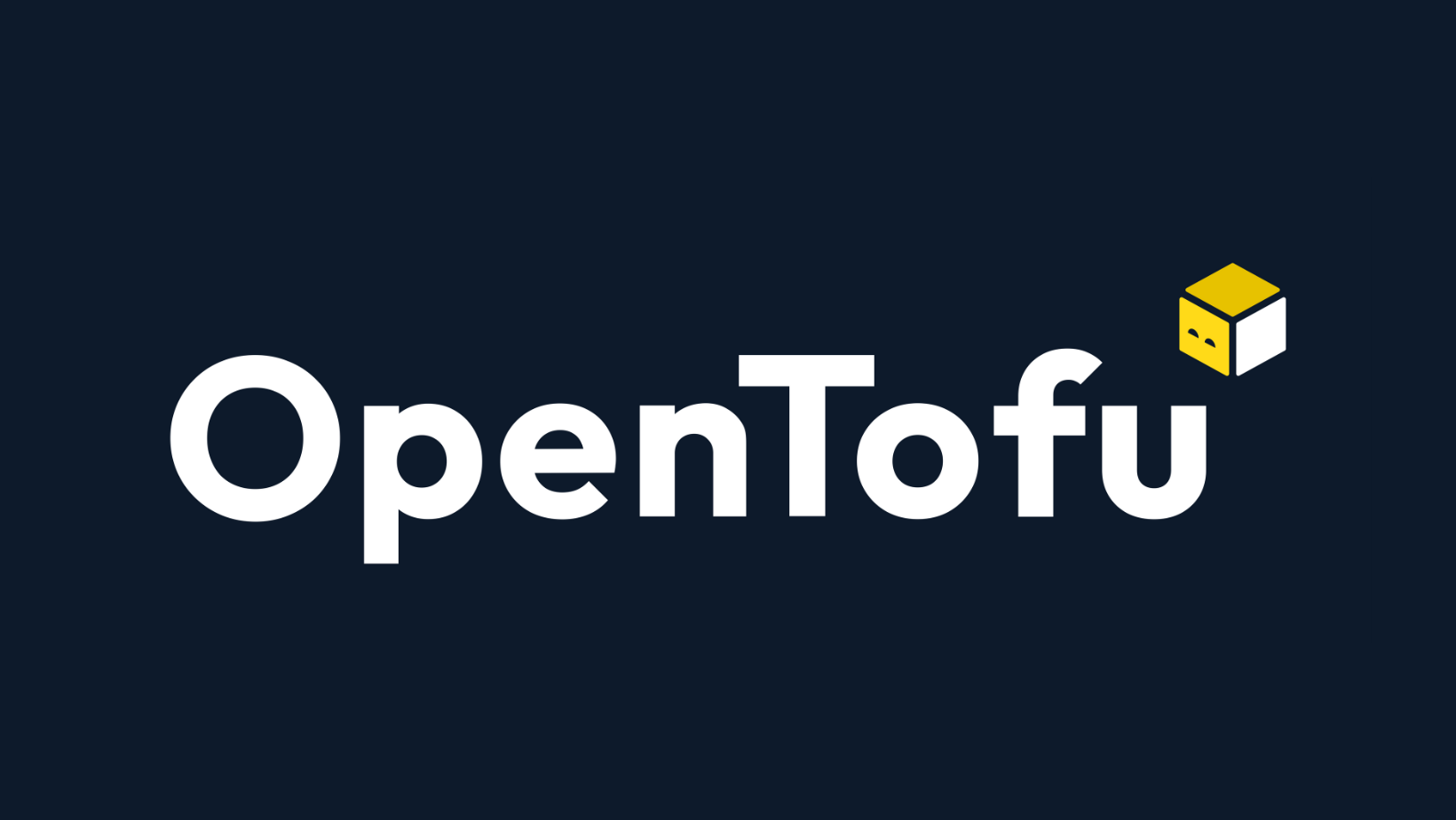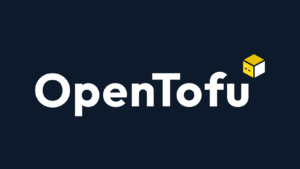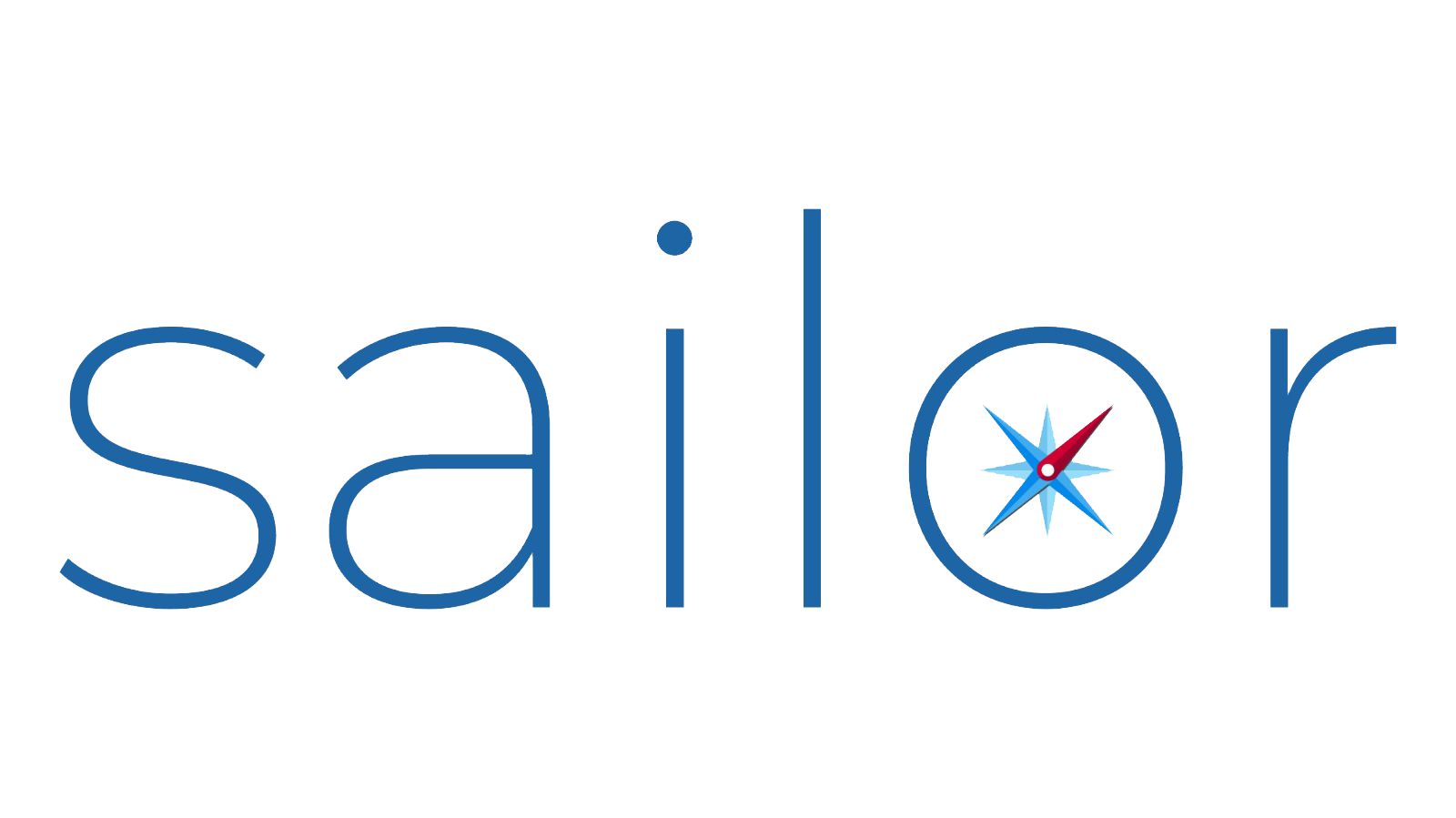Blogs
Sailor is a control-plane to make cloud adoption simple and customizable, via self service model with cloud governance
- All Posts
- OpenTofu

Kubernetes Role-Based Access Control (RBAC) is a powerful tool for securing your Kubernetes cluster. It allows you to define roles...

Canary deployments are a powerful technique for safely rolling out new versions of applications in production. They allow you to...

In the realm of infrastructure as code (IaC) tools, Terraform has long been a popular choice, allowing developers to automate...

Multi-cloud deployments are becoming increasingly popular as organizations seek to take advantage of the best that each cloud provider has...

Open source software (OSS) is a powerful tool for collaboration and innovation. It allows teams to share and build on...

Large files are a common challenge in Infrastructure Provisioning. They can be difficult to transfer, store, and manage. However, by following...

Cloud computing has revolutionized the way businesses operate, providing access to scalable and affordable IT resources on demand. However, as...

Infrastructure as Code (IaC) is a popular approach to managing IT infrastructure. IaC tools allow you to define your infrastructure...

Terraform is a popular infrastructure as code (IaC) tool that allows you to manage your infrastructure in a declarative way....

Protect Your Kubernetes Cluster from Attack with RBAC
Kubernetes Role-Based Access Control (RBAC) is a powerful tool for securing your Kubernetes cluster. It allows you to define roles and permissions for users and service accounts, so that they can only access the resources they need to do their jobs. RBAC is based on the following principles: Benefits of using RBAC: There are many benefits to using RBAC in Kubernetes, including: How to use RBAC in Kubernetes? To use RBAC in Kubernetes, you need to:

Effortless Robust Canary Deployment on Kubernetes with Nginx Ingress Controller
Canary deployments are a powerful technique for safely rolling out new versions of applications in production. They allow you to gradually release the new version to a small subset of users, monitor its performance, and then roll it out to the rest of your users if everything is working as expected. Canary deployments can be implemented on Kubernetes using a variety of tools and techniques. One popular approach is to use Nginx Ingress Controller. Nginx Ingress Controller is a load balancer for Kubernetes that can be used to route traffic to different versions of your application. To implement a canary deployment on Kubernetes with Nginx Ingress Controller, you will need to: In the following sections, we will explain each line of the canary deployment on Kubernetes with Nginx Ingress Controller 1.Create a deployment for the new version of your application: The first step is to create a deployment for the new version of your application. This deployment will be used to run the new version of your application in a canary environment. Here is an example deployment manifest for an Nginx application: YAML apiVersion: apps/v1 kind: Deployment metadata: name: nginx-canary spec: replicas: 1 selector: matchLabels: app: nginx version: canary template: metadata: labels: app: nginx version: canary spec: containers: – name: nginx image: nginx:latest ports: – containerPort: 80 This deployment will create a single pod running the latest version of the Nginx image. 2.Create a service for the new version of your application: Next, you need to create a service for the new version of your application. This service will be used to expose the new version of your application to the rest of your cluster. Here is an example service manifest for an Nginx application: YAML apiVersion: v1 kind: Service metadata: name: nginx-canary spec: selector: app: nginx version: canary ports: – port: 80 targetPort: 80 This service will expose the new version of your application on port 80. 3.Create an Ingress rule for the new version of your application: Finally, you need to create an Ingress rule for the new version of your application. This Ingress rule will be used to route traffic to the new version of your application. Here is an example Ingress rule manifest for an Nginx application: YAML apiVersion: networking.k8s.io/v1 kind: Ingress metadata: name: nginx-ingress spec: rules: – host: nginx.example.com http: paths: – path: / pathType: Prefix backend: service: name: nginx-canary port: 80 This Ingress rule will route all traffic to the nginx-canary service, which will expose the new version of your application. 4.Deploy the new version of your application: Once you have created the deployment, service, and Ingress rule for the new version of your application, you can deploy the new version by creating a new pod annotation. Here is an example command to create a pod annotation that will deploy the new version of your application: Bash kubectl annotate pod nginx-deployment version=canary This command will add a version=canary annotation to the nginx-deployment pod. The Ingress controller will use this annotation to route traffic to the nginx-canary service. 5.Monitor the canary deployment: Once you have deployed the canary version of your application, you need to monitor its performance to ensure that it is working as expected. You can use metrics such as CPU and memory usage, error rates, and response times to monitor the performance of the canary version. If the canary version of your application is working as expected, you can roll it out to the rest of your users. To do this, you can remove the version=canary annotation from the nginx-deployment pod. Scaling the canary deployment: Once you have deployed the canary version of your application, you may want to scale it up or down to see how it performs under different load conditions. You can use the Kubernetes HorizontalPodAutoscaler (HPA) to automatically scale the canary deployment based on CPU or memory usage. To do this, you will need to create a HorizontalPodAutoscaler manifest. The following is an example manifest for an Nginx application: YAML apiVersion: autoscaling/v2beta1 kind: HorizontalPodAutoscaler metadata: name: nginx-canary spec: scaleTargetRef: apiVersion: apps/v1 kind: Deployment name: nginx-canary minReplicas: 1 maxReplicas: 10 targetCPUUtilizationPercentage: 80 This HPA will scale the canary deployment up to 10 replicas if the CPU usage of the canary deployment reaches 80%. If you are not satisfied with the performance of the canary version of your application, you can roll it back to the previous version. To do this, you can remove the version=canary annotation from the nginx-deployment pod. There are a number of canary testing tools available that can help you to automate the canary deployment process and monitor the performance of the canary version of your application. One popular canary testing tool is CanaryKit. CanaryKit can help you to: * Create and manage canary deployments. * Monitor the performance of canary deployments. * Roll back canary deployments if necessary. By using a canary testing tool, you can make it easier to implement and manage canary deployments on Kubernetes. If you are looking for an easy way to manage and automate your cloud infrastructure, Sailor Cloud is a good option to consider. To learn more about Sailor Cloud, please visit the Sailor Cloud website: https://www.sailorcloud.io/ External Resources: Canary Deployments on Kubernetes with Nginx Ingress Controller: A Step-by-Step Guide: https://chimbu.medium.com/canary-deployment-using-ingress-nginx-controller-2e6a527e7312 Canary Deployments on Kubernetes with Nginx Ingress Controller: Best Practices: https://github.com/ContainerSolutions/k8s-deployment-strategies/blob/master/canary/nginx-ingress/README.md Canary Deployments on Kubernetes with Nginx Ingress Controller: Common Use Cases: https://kubernetes.github.io/ingress-nginx/examples/canary/

OpenTofu: A Triumphant Response to Terraform’s License Change
In the realm of infrastructure as code (IaC) tools, Terraform has long been a popular choice, allowing developers to automate the provisioning and management of cloud infrastructure. However, in 2023, HashiCorp, the company behind Terraform, announced a switch from the open-source Mozilla Public License v2.0 (MPLv2) to the Business Source License (BSL). This change raised concerns within the open-source community, leading to the creation of OpenTofu, a fork of Terraform that aims to maintain the tool’s open-source nature. The Ambiguity of the BSL The BSL, while intended to allow for commercial use of open-source software, contains certain ambiguities that have caused uncertainty among Terraform users. Specifically, the license’s restrictions on “competitive” and “embedded” use have led to concerns about whether certain common use cases would violate the license. HashiCorp’s FAQs have attempted to address these concerns, but the ambiguity of the BSL remains a source of unease for many Terraform users. The possibility of future changes to the license, either by HashiCorp or by courts interpreting its terms, has further heightened the uncertainty. OpenTofu: Preserving Terraform’s Open-Source Legacy In response to these concerns, a group of companies, including Gruntwork, Spacelift, Harness, Env0, and Scalr, formed the OpenTF initiative to create an open-source fork of Terraform. The resulting project, named OpenTofu, aims to maintain Terraform’s feature parity and compatibility while ensuring that it remains under an open-source license. OpenTofu is currently in its early stages of development, but it has already gained significant support from the community. The project has been hosted by the Linux Foundation, a non-profit organization dedicated to open-source software, and has attracted contributions from numerous individuals and companies. Benefits of Choosing OpenTofu For Terraform users, switching to OpenTofu offers several benefits: Sailor Cloud: A Community for OpenTofu Sailor Cloud is an AI-driven multi-cloud orchestration platform that enables self-service using well-architected blueprints from day 0 that provides a home for OpenTofu development and collaboration. It offers a range of resources and tools to help developers and users of OpenTofu, including: Centralized Documentation and Tutorials: Sailor Cloud provides a centralized repository for OpenTofu documentation and tutorials, making it easy for new users to get started and experienced users to stay up-to-date. Collaborative Community Forum: Sailor Cloud provides a dedicated forum for OpenTofu users and developers to discuss topics, share ideas, and collaborate on projects. Module and Plugin Repository: Sailor Cloud offers a comprehensive repository of OpenTofu modules and plugins, providing users with a wide range of tools and extensions to enhance their OpenTofu experience. Automated Testing and Deployment: Sailor Cloud’s CI/CD pipeline automates the testing and deployment of OpenTofu changes, ensuring the stability and reliability of the platform. Project Hosting and Management: Sailor Cloud provides a secure and scalable platform for hosting and managing OpenTofu projects, making it easy for teams to collaborate and share their work. Sailor Cloud is committed to providing a welcoming and inclusive environment for all OpenTofu contributors and users. It is governed by a community board that is elected by the community, and it is funded by donations from individuals and companies. Sailor Cloud’s Contribution to OpenTofu Sailor Cloud is making a significant contribution to OpenTofu by covering the cost of one full-time equivalent (FTE) for at least two years. This funding will allow the OpenTofu project to hire a dedicated developer to work on the project full-time. This will help to accelerate the development of new features, improve the quality of the code, and provide better support for users. In addition to covering the cost of an FTE, Sailor Cloud is also providing other resources to the OpenTofu project, such as: The Future of OpenTofu With its strong community backing and commitment to open-source principles, OpenTofu is well-positioned to become a viable alternative to Terraform for both personal and enterprise use. As the project matures, it is expected to gain wider adoption and contribute to the continued evolution of IaC tools. The decision by HashiCorp to change Terraform’s license raised concerns about the future of the project and its impact on the open-source community. However, the emergence of OpenTofu offers a promising alternative, ensuring that Terraform’s open-source legacy continues to thrive. By choosing OpenTofu, users can contribute to a community-driven project that prioritizes transparency, openness, and feature parity. If you are looking for an easy way to manage and automate your cloud infrastructure, Sailor Cloud is a good option to consider. To learn more about Sailor Cloud, please visit the Sailor Cloud website: https://www.sailorcloud.io/ To learn more about OpenTofu please visit their official blogs: OpenTofu blog: https://opentofu.org/blog/

Terraform for Multi-Cloud Management: Efficient Strategies and Considerations
Multi-cloud deployments are becoming increasingly popular as organizations seek to take advantage of the best that each cloud provider has to offer. However, managing multi-cloud environments can be complex and challenging, especially when it comes to infrastructure provisioning and configuration. Terraform is a popular infrastructure as code (IaC) tool that can be used to simplify and automate the management of multi-cloud environments. Terraform provides a consistent interface for interacting with different cloud providers, and it allows you to define your infrastructure in a declarative way. This makes it easy to deploy and manage your infrastructure across multiple clouds in a consistent and repeatable way. Benefits of using Terraform for multi-cloud management There are several benefits to using Terraform for multi-cloud management, including: Strategies for managing multi-cloud environments with Terraform There are a few key strategies that you can follow for managing multi-cloud environments with Terraform: Considerations for managing multi-cloud environments with Terraform There are a few key considerations that you should be aware of when managing multi-cloud environments with Terraform: Code examples Here are some code examples of how to use Terraform to manage multi-cloud environments: # Creating Terraform workspaces terraform workspace new dev # Deploying Terraform modules terraform apply -module=vpc # Using Terraform providers provider “aws” { region = “us-east-1” } resource “aws_instance” “example” { ami = “ami-00000000” instance_type = “t2.micro” } Terraform is a powerful tool that can be used to simplify and automate the management of multi-cloud environments. By following the strategies and considerations outlined in this blog post, you can effectively manage your multi-cloud infrastructure with Terraform. Additional tips for managing multi-cloud environments with Terraform: If you are looking for an easy way to manage and automate your cloud infrastructure, Sailor Cloud is a good option to consider. To learn more about Sailor Cloud, please visit the Sailor Cloud website: https://www.sailorcloud.io/ To learn more about Terraform please visit their official blogs:

Enhancing Collaboration with Open Tofu: Best Practices for Teams
Open source software (OSS) is a powerful tool for collaboration and innovation. It allows teams to share and build on each other’s work, and to create products and services that would not be possible otherwise. However, open source collaboration can also be challenging, especially for teams that are new to it. One of the biggest challenges of open source collaboration is communication. With team members spread around the world, it can be difficult to stay on the same page and coordinate efforts. Another challenge is that open source projects often attract a diverse range of contributors, with different skills, experience, and working styles. This can make it difficult to build consensus and ensure that everyone is working towards the same goals. Open Tofu is a set of tools and practices that can help teams overcome these challenges and collaborate more effectively on open source projects. Open Tofu is based on the following principles: Open Tofu provides a number of features that can help teams implement these principles, including: Best practices for using Open Tofu to enhance collaboration: Here are some best practices for using Open Tofu to enhance collaboration on open source projects: Code examples Here are some code examples of how to use Open Tofu to implement specific features: Python # Code example of how to use the Open Tofu system to track and manage contributions class Contribution: def __init__(self, author, commit_message): self.author = author self.commit_message = commit_message class ContributionTracker: def __init__(self): self.contributions = [] def add_contribution(self, contribution): self.contributions.append(contribution) def get_contributions(self): return self.contributions # Create a contribution tracker contribution_tracker = ContributionTracker() # Add a contribution contribution = Contribution(“John Doe”, “Fixed a bug in the code”) contribution_tracker.add_contribution(contribution) # Get all contributions contributions = contribution_tracker.get_contributions() # Print all contributions for contribution in contributions: print(f”{contribution.author}: {contribution.commit_message}”) Here are some specific examples of how teams can use Open Tofu to enhance collaboration: Open Tofu is a powerful tool that can help teams to collaborate more effectively on open source projects. By following the best practices outlined above, teams can use Open Tofu to overcome the challenges of open source collaboration and create products and services that would not be possible otherwise. Here are some additional tips for using Open Tofu to enhance collaboration: By following these tips, teams can use Open Tofu to create a collaborative and productive environment where everyone can thrive. If you are looking for an easy way to manage and automate your cloud infrastructure, Sailor Cloud is a good option to consider. To learn more about Sailor Cloud, please visit the Sailor Cloud website: https://www.sailorcloud.io/ To learn more about OpenTofu please visit their official blogs: OpenTofu blog: https://opentofu.org/blog/

Boost Your Infrastructure Provisioning with 4 Simple Steps for Managing Large Files
Large files are a common challenge in Infrastructure Provisioning. They can be difficult to transfer, store, and manage. However, by following some best practices and using code examples, you can reduce the complexity of managing large files and improve the performance and scalability of your infrastructure. Challenges of managing large files in Infrastructure Provisioning There are a number of challenges associated with managing large files in Infrastructure Provisioning, including: Best practices for managing large files in Infrastructure Provisioning To overcome these challenges, you can follow some best practices for managing large files in provisioning infrastructure, including: Here are some code examples of how to use a CDN and a DFS to manage large files in provisioning your infrastructure: 1.Use a CDN to manage large files in Infrastructure Provisioning import boto3 # Create a CloudFront client client = boto3.client(‘cloudfront’) # Get the distribution ID distribution_id = ‘YOUR_DISTRIBUTION_ID’ # Get the object URL object_url = ‘https://YOUR_DISTRIBUTION_DOMAIN/YOUR_OBJECT_KEY’ # Generate a signed URL signed_url = client.generate_presigned_url( ClientMethod=’get_object’, Params={‘Bucket’: ‘YOUR_BUCKET_NAME’, ‘Key’: ‘YOUR_OBJECT_KEY’}, ExpiresIn=3600 ) # Download the file with open(‘output.file’, ‘wb’) as f: response = requests.get(signed_url) f.write(response.content) Benefits of using a content delivery network (CDN) to manage large files in Infrastructure Provisioning There are several benefits to using a CDN to manage large files in provisioning infrastructure, including: 2.Use a DFS to manage large files in Infrastructure Provisioning import pyhdfs # Create a HDFS client client = pyhdfs.HdfsClient(‘YOUR_HDFS_MASTER_HOST’) # Get the file path file_path = ‘/path/to/file.txt’ # Upload the file client.upload(file_path, ‘YOUR_HDFS_USERNAME’) # Download the file with open(‘output.file’, ‘wb’) as f: data = client.read(file_path, ‘YOUR_HDFS_USERNAME’) f.write(data) Benefits of using a distributed file system (DFS) to manage large files in Infrastructure Provisioning There are also several benefits to using a DFS to manage large files in provisioning infrastructure, including: In addition to the best practices and code examples described above, there are a few other things to keep in mind when managing large files in provisioning your infrastructure: By following the best practices and code examples described in this article, you can reduce the complexity of managing large files in provisioning your infrastructure and improve the performance and scalability of your infrastructure. Additionally, you can improve the security and compliance of your file management practices. Comparing Terraform, Ansible, and CloudFormation: The following table compares the three IaC tools discussed in this article: Feature Terraform Ansible CloudFormation Cloud compatibility Cloud-agnostic Cloud-agnostic AWS only Open source Yes Yes No Configuration management Good Excellent Good Infrastructure provisioning Excellent Good Excellent Learning curve Steep Moderate Easy Cost Free Free Pay-as-you-go Example code: Terraform provider “aws” { region = “us-east-1” } resource “aws_instance” “example” { ami = “ami-01234567890123456” instance_type = “t2.micro” } This code will create an EC2 instance on AWS in the us-east-1 region with the ami-01234567890123456 AMI and the t2.micro instance type. Ansible — – hosts: all tasks: – name: Install the Apache web server yum: name: httpd state: present – name: Start the Apache web server service: name: httpd state: started This code will install the Apache web server on all EC2 instances in the all group and start the Apache web server. CloudFormation YAML AWSTemplateFormatVersion: ‘2010-09-09’ Resources: EC2Instance: Type: AWS::EC2::Instance Properties: ImageId: ami-01234567890123456 InstanceType: t2.micro This code will create an EC2 instance on AWS with the ami-01234567890123456 AMI and the t2.micro instance type. Which IaC tool is right for you? Terraform, Ansible, and CloudFormation are all popular IaC tools with their own strengths and weaknesses. The best IaC tool for you will depend on your specific needs and requirements. If you need to manage infrastructure on multiple cloud providers, then you should choose a cloud-agnostic IaC tool such as Terraform or Ansible. This is because cloud-agnostic IaC tools allow you to define your infrastructure in a way that is independent of any particular cloud provider. This makes it easy to move your infrastructure from one cloud provider to another, or to manage a hybrid infrastructure that spans multiple cloud providers. If you are looking for an open-source IaC tool, then you should choose Terraform. Terraform is an open-source tool, which means that you can download and use it for free. This can be a significant advantage for organizations with limited budgets. Additionally, Terraform has a large and active community, which means that there are many resources available to help you learn and use Terraform. If you are using AWS infrastructure, then CloudFormation is a good choice. CloudFormation is a proprietary IaC tool from AWS, which means that it is only compatible with AWS infrastructure. However, CloudFormation is tightly integrated with AWS services, which can make it easier to provision and manage your AWS infrastructure. Ultimately, the best way to choose the right IaC tool for you is to evaluate your specific needs and requirements. Consider the following factors when making your decision: Cloud compatibility: Do you need to manage infrastructure on multiple cloud providers? If so, then you should choose a cloud-agnostic IaC tool. Open source: Do you want to use an open-source IaC tool? If so, then Terraform is a good choice. Community and support: How important is community and support to you? If you are new to IaC, then you may want to choose a tool with a large and active community. Features: What features are important to you? Consider the features that each IaC tool offers and choose the tool that best meets your needs. If you are still unsure which IaC tool is right for you, then I recommend that you try out a few different tools and see which one works best for you. Most IaC tools offer free trials, so you can try them out before you commit to a paid plan. To read more informative and engaging blogs about Terraform, AWS and other content ; please do follow the link belowhttps://www.sailorcloud.io/blog/ External resources: How to Manage Large Files in Provisioning Infrastructure for Better Performance and Scalability by AWS: https://www.xenonstack.com/insights/terraform How to Manage Large Files with a Distributed File System by Cloudian: https://cloudian.com/blog/new-object-storage-search-and-file-capabilities/

Maximize Your Cloud Cost Savings with These 10 Powerhouse Strategies
Cloud computing has revolutionized the way businesses operate, providing access to scalable and affordable IT resources on demand. However, as cloud usage grows, so does the potential for wasteful spending. Effective cloud cost management (CCM) is essential for organizations that want to maximize their savings and avoid overpaying for cloud services. Cloud cost management : In this article, we will discuss 10 powerhouse strategies for managing cloud costs: 1. Review pricing and billing information The first step to effective cloud cost management is to understand your cloud pricing and billing model. Cloud providers offer a variety of pricing options, so it is important to choose the one that best meets your needs and budget. Once you have chosen a pricing model, be sure to review your billing information regularly to identify any potential cost savings opportunities. 2. Set budgets Once you understand your cloud pricing and billing model, you can start to set budgets for your cloud usage. This will help you track your spending and ensure that you stay within your budget. There are a variety of ways to set cloud budgets, such as by department, project, or resource type. 3. Identify unutilized resources One of the most common ways to reduce cloud costs is to identify and eliminate unutilized resources. Unutilized resources are those that are not being used or are underutilized. Common examples of unutilized resources include idle EC2 instances, unused EBS volumes, and orphaned snapshots. There are a variety of tools and techniques that you can use to identify unutilized resources. For example, you can use the AWS Cost Explorer or Azure Cost Management tools to identify unused resources. You can also use third-party tools such as CloudHealth or Apptio. 4. Identify idle resources In addition to unutilized resources, you should also identify and terminate idle resources. Idle resources are those that are not being used but are still running and incurring costs. Common examples of idle resources include EC2 instances that are running during off-peak hours or development environments that are not being used. You can use the same tools and techniques that you use to identify unutilized resources to identify idle resources. Once you have identified idle resources, you can terminate them to save costs. 5. Right-size the services Right-sizing your cloud services means choosing the right instance type and resource configuration for your workloads. If you are overprovisioning your resources, you will be wasting money. If you are underprovisioning your resources, your workloads may not perform optimally. There are a variety of tools and techniques that you can use to right-size your cloud services. For example, you can use the AWS EC2 Instance Recommendation tool or the Azure Advisor tool. You can also use third-party tools such as Cloudability or RightScale. 6. Use reserved instances Reserved instances are a way to purchase cloud resources at a discounted price. Reserved instances are typically purchased for a one-year or three-year term. If you have predictable cloud usage patterns, reserved instances can be a great way to save costs. 7. Leverage spot instances Spot instances are unused cloud resources that are available at a discounted price. Spot instances are typically priced at a fraction of the on-demand price, but they can be terminated at any time if the cloud provider needs the resources for other customers. Spot instances are a good option for workloads that can be interrupted, such as batch jobs or development environments. 8. Limit data transfer fees Data transfer fees can be a significant cost for organizations that use a lot of cloud storage. Cloud providers charge data transfer fees for moving data to and from the cloud. There are a few ways to limit data transfer fees. First, you can choose a cloud provider that offers free or discounted data transfer. Second, you can optimize your data transfer by using a content delivery network (CDN) or by compressing your data. 9. Choose a single or multi-cloud deployment Choosing a single or multi-cloud deployment can also impact your cloud costs. A single-cloud deployment means that you use all of your cloud resources from a single cloud provider. A multi-cloud deployment means that you use cloud resources from multiple cloud providers. There are pros and cons to both single-cloud and multi-cloud deployments. Single-cloud deployments can offer better pricing and easier management. Multi-cloud deployments can offer more flexibility and resilience. 10. Monitor cost anomalies Even after you have implemented all of the above strategies, it is important to monitor your cloud costs regularly for cost anomalies. Cost anomalies are unexpected spikes in your cloud spending. There are a variety of tools and techniques that you can use to monitor cost anomalies. For example, you can use the AWS Cost Explorer or Azure Cost Management tools to create alerts for cost anomalies. You can also use third-party tools such as CloudHealth or Apptio. Additional tips for maximizing cloud savings: In addition to the 10 strategies discussed above, there are a few other things you can do to maximize your cloud savings: Cloud cost management is an ongoing process. By following the strategies and tips discussed in this article, you can maximize your cloud savings and avoid overpaying for cloud services. Here are some additional tips that you can implement: By following these tips, you can significantly reduce your cloud costs and improve your bottom line. To read more informative and engaging blogs about Cloud cost, Infrastructure as Code (IAC) and other cloud computing topics, follow the link : https://www.sailorcloud.io/blog/ External Resources: Cloud Cost Optimization: A Comprehensive Guide: https://www.cloud4c.com/blogs/google-cloud-cost-optimization-the-ultimate-guide-for-gcp Azure Cost Management Best Practices: https://learn.microsoft.com/en-us/azure/cost-management-billing/costs/cost-mgt-best-practices Cloud Cost Optimization: 10 Strategies to Save Money: https://www.whizlabs.com/blog/google-cloud-cost-optimization/

Exploring 3 Popular Infrastructure as Code Tools: Terraform, Ansible, and CloudFormation
Infrastructure as Code (IaC) is a popular approach to managing IT infrastructure. IaC tools allow you to define your infrastructure in code, which can then be used to provision, deploy, and manage your infrastructure resources. There are many different IaC tools available, each with its own strengths and weaknesses. In this article, we will compare three of the most popular IaC tools: Terraform, Ansible, and CloudFormation. What is Infrastructure as Code (IaC)? Infrastructure as Code (IaC) is the practice of managing and provisioning computer data centers through machine-readable definition files, rather than physical hardware configuration or interactive configuration tools. IaC allows users to define their infrastructure as code, which can then be used to provision and manage their infrastructure resources. This can be done using a variety of different tools, such as Terraform, Ansible, and CloudFormation. Benefits of Infrastructure as Code There are many benefits to using IaC, including: Comparing Terraform, Ansible, and CloudFormation: The following table compares the three IaC tools discussed in this article: Feature Terraform Ansible CloudFormation Cloud compatibility Cloud-agnostic Cloud-agnostic AWS only Open source Yes Yes No Configuration management Good Excellent Good Infrastructure provisioning Excellent Good Excellent Learning curve Steep Moderate Easy Cost Free Free Pay-as-you-go Example code: Terraform provider “aws” { region = “us-east-1” } resource “aws_instance” “example” { ami = “ami-01234567890123456” instance_type = “t2.micro” } This code will create an EC2 instance on AWS in the us-east-1 region with the ami-01234567890123456 AMI and the t2.micro instance type. Ansible — – hosts: all tasks: – name: Install the Apache web server yum: name: httpd state: present – name: Start the Apache web server service: name: httpd state: started This code will install the Apache web server on all EC2 instances in the all group and start the Apache web server. CloudFormation YAML AWSTemplateFormatVersion: ‘2010-09-09’ Resources: EC2Instance: Type: AWS::EC2::Instance Properties: ImageId: ami-01234567890123456 InstanceType: t2.micro This code will create an EC2 instance on AWS with the ami-01234567890123456 AMI and the t2.micro instance type. Which IaC tool is right for you? Terraform, Ansible, and CloudFormation are all popular IaC tools with their own strengths and weaknesses. The best IaC tool for you will depend on your specific needs and requirements. If you need to manage infrastructure on multiple cloud providers, then you should choose a cloud-agnostic IaC tool such as Terraform or Ansible. This is because cloud-agnostic IaC tools allow you to define your infrastructure in a way that is independent of any particular cloud provider. This makes it easy to move your infrastructure from one cloud provider to another, or to manage a hybrid infrastructure that spans multiple cloud providers. If you are looking for an open-source IaC tool, then you should choose Terraform. Terraform is an open-source tool, which means that you can download and use it for free. This can be a significant advantage for organizations with limited budgets. Additionally, Terraform has a large and active community, which means that there are many resources available to help you learn and use Terraform. If you are using AWS infrastructure, then CloudFormation is a good choice. CloudFormation is a proprietary IaC tool from AWS, which means that it is only compatible with AWS infrastructure. However, CloudFormation is tightly integrated with AWS services, which can make it easier to provision and manage your AWS infrastructure. Ultimately, the best way to choose the right IaC tool for you is to evaluate your specific needs and requirements. Consider the following factors when making your decision: Cloud compatibility: Do you need to manage infrastructure on multiple cloud providers? If so, then you should choose a cloud-agnostic IaC tool. Open source: Do you want to use an open-source IaC tool? If so, then Terraform is a good choice. Community and support: How important is community and support to you? If you are new to IaC, then you may want to choose a tool with a large and active community. Features: What features are important to you? Consider the features that each IaC tool offers and choose the tool that best meets your needs. If you are still unsure which IaC tool is right for you, then I recommend that you try out a few different tools and see which one works best for you. Most IaC tools offer free trials, so you can try them out before you commit to a paid plan. To read more informative and engaging blogs about Terraform, AWS and other content ; please do follow the link below https://www.sailorcloud.io/blog/ External resources: Getting Started with Terraform: https://medium.com/bb-tutorials-and-thoughts/how-to-get-started-with-terraform-c9a693853598 Getting Started with Ansible: https://docs.ansible.com/ansible/latest/getting_started/index.html CloudFormation Best Practices: https://aws.amazon.com/blogs/infrastructure-and-automation/best-practices-automating-deployments-with-aws-cloudformation/

How to identify and resolve AWS specific problems in Terraform
Terraform is a popular infrastructure as code (IaC) tool that allows you to manage your infrastructure in a declarative way. This means that you can define your desired state, and Terraform will take care of making the necessary changes to achieve that state. While Terraform is a powerful tool, it can be complex to use, especially when managing complex AWS infrastructure. In this article, we will discuss how to identify and resolve AWS specific problems in Terraform. Common AWS specific problems in Terraform Here are some of the most common AWS specific problems that you may encounter when using Terraform: # Check for dependency errors terraform validate # Check for state errors terraform refresh # Check for provider errors terraform provider install aws # Check for configuration errors terraform validate How to identify AWS specific problems in Terraform There are a few ways to identify AWS specific problems in Terraform: # Read the Terraform output terraform output # Check the Terraform logs terraform logs # Use the Terraform `terraform plan` command to identify potential problems terraform plan # Use the Terraform `terraform validate` command to check your Terraform configuration for errors terraform validate How to resolve AWS specific problems in Terraform ? Once you have identified the cause of the problem, you can take steps to resolve it. Here are some tips: Resolve dependency errors by explicitly defining dependencies between your resources in your Terraform configuration Resolve state errors by using the terraform refresh command or by manually editing the state file Resolve provider errors by troubleshooting the problem with the provider or by updating the provider to a newer version # Resolve configuration errors by fixing the error in your Terraform configuration Tips for preventing AWS specific problems in Terraform Here are some tips for preventing AWS specific problems in Terraform: To read more informative and engaging blogs about Terraform, AWS, and other cloud computing topics, follow the link below https://www.sailorcloud.io/blog/ For more information on how to address Terraform problems in AWS, please read the following article : https://aws.amazon.com/blogs/apn/terraform-beyond-the-basics-with-aws/
